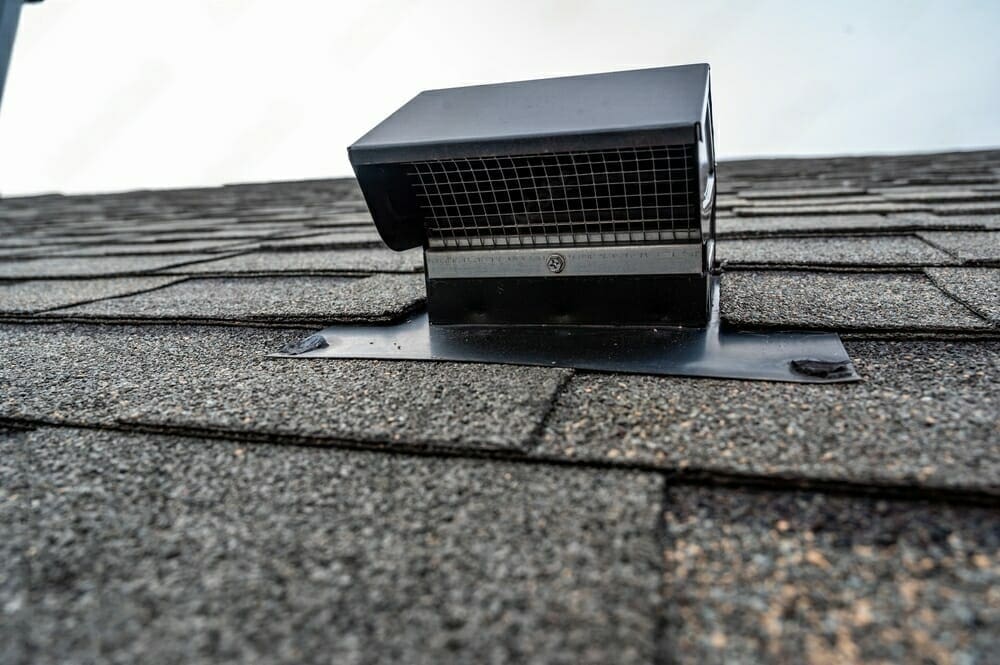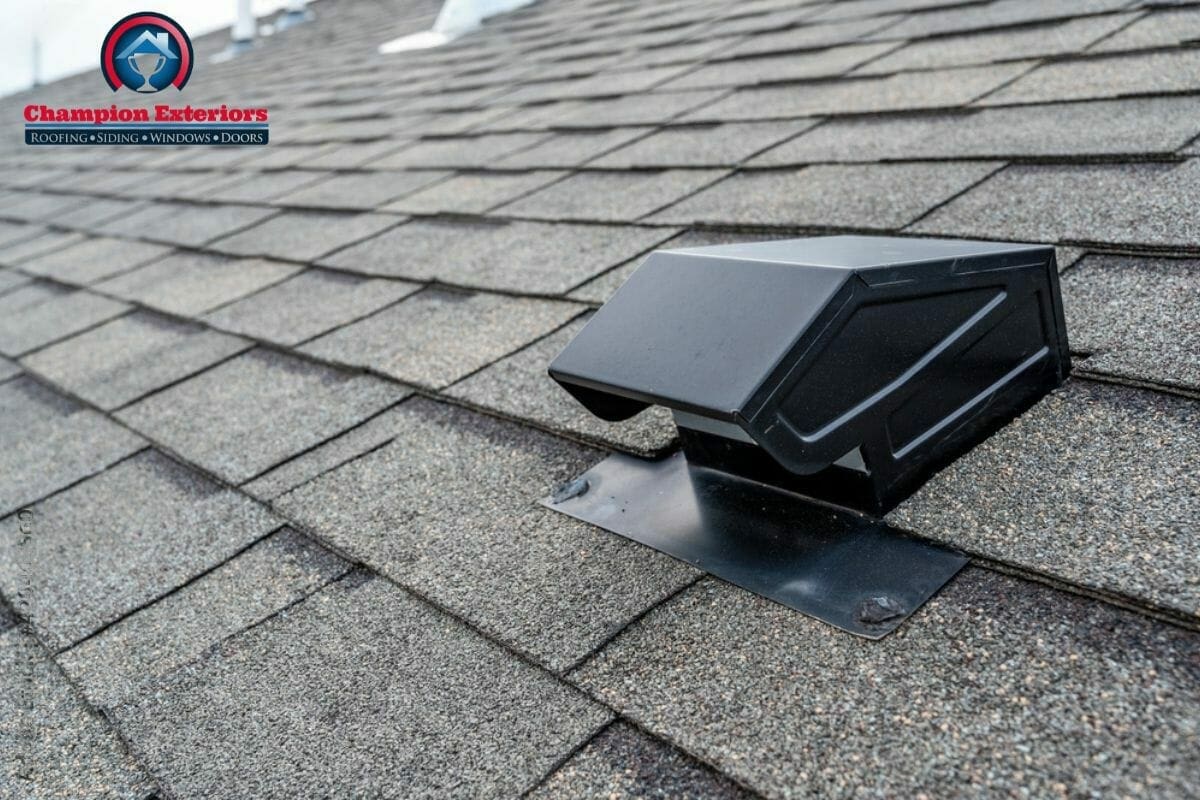A roof is made up of several components, with some visible on the roof, while others are below the structure. The components below the roofing materials may not be visible to the naked eye, but they are vital to the roof’s performance.
Roof flashing is one vital part of a roof that homeowners do not generally discuss. If you are thinking of installing a new roof or replacing an existing structure, you must know what roof flashing is, and its role in the roofing system.
After reading this blog, you will be familiar with flashing and how important it is to the proper functioning of a roofing system.
What Is Flashing On A Roof?
Roof flashing is a piece of metal, or plastic covering, that the roofers install to prevent water from entering your roof. You will mostly notice these metal strips along the edges of a roof, where the roof surface meets a wall, a valley where two roof slopes meet, or around anything extending from the roof, like a chimney.
Your contractor will generally also install flashing beneath the roof shingles. Or if you have a metal roof, then flashing is installed on the top of the metal panels.
Roof flashing can be made of copper, zinc, aluminum, or galvanized steel. It can be installed during the construction of a new roof or during the repair of an existing roof. We will discuss flashing materials more later on in this blog.

Should You Install Flashing On A Roof?
Many homeowners need clarification on whether flashing is crucial for their homes or not, so let’s settle on an answer.
Though you can install a new roof without flashing, doing so is not advised, so the answer is yes, you definitely need to install a layer of roof flashing.
Flashing plays an important role in your roofing system. If you do not install metal flashing on your roof, you will likely face several issues. Missing flashing can lead to leaks and water damage, and your roof will also pose an increased risk for mold and mildew growth.
Top Materials For Roof Flashing
Homeowners are usually well-informed about the different types of roofing materials available on the market. However, the same is not true for flashing. Different types of materials are used to manufacture roof flashing. Below are some of the most popular options:
Aluminum
First on our list is aluminum, a metal with a wide variety of applications in roofing and siding. Aluminum is an affordable and versatile material for flashing. This metal is available in sheets and rolls and can be shaped and molded to easily fit different areas and corners of the roof.
However, the downside of aluminum is that it’s not as durable as other types of metal flashing, and can rust if not properly coated.
Steel
Steel is one of the most substantial types of metals available, and a flashing made from steel can face harsh weather conditions easily.
Recently, homeowners have been shifting towards the use of stainless steel and galvanized steel options for roof flashing. These materials are durable and can offer adequate protection against leaks. They do not rust either, so they’re preferred for concrete and mortar construction projects.
However, due to their rich features, this flashing can be quite costly.
Copper
Copper is the most common, and durable material used for flashing. It lasts on your roof longer than other flashing materials, but it is also the most expensive since it’s considered a premium flashing material.
You can use this material in many vulnerable areas on a roofing system. Copper can fare well as chimney flashing, step flashing, and valley flashing. This type of roof flashing is strongly recommended if you have a sizeable budget.
Benefits Of Installing Roof Flashing
A durable flashing material is a must when protecting your property. A high-quality roof flashing can offer you a wide range of benefits. Some of them are given below:
Flashing Keeps Your Roof Watertight
Flashing helps prevent roof leaks from occurring and damaging the interiors of your home, as well as windows and doors. The primary purpose of roof flashing is to ensure the water does not reach the area beneath the shingles. If there is flashing installed, the rainwater will pass right over the material instead of entering the roof’s vulnerable areas.
Prevents Mold and Mildew Growth
Flashing helps reduce the amount of moisture on a roof by channeling water to your gutters. Without them, water is more likely to pool and enter your home through the openings in the roof, increasing the chance of mold and mildew growth within the interior of your home.
Improves The Lifespan Of The Roof
Roof flashing is a great way to increase the lifespan of your roof. We have addressed above that roof flashing helps prevent water from seeping into your home and reduces the chances of mold and mildew growth. It also protects your home from water damage, which affects how long your roof will last without repairs or replacement.
Flashing prevents these issues, and with it, your roof will last a long time.
Areas Where You Need To Install Roof Flashing
There are certain areas on a roof that are more prone to water pooling, and having roof leaks occur. These areas need extra protection, which metal flashing can provide. Here are some of the areas:
- Roof Valleys
- Sidewalls
- Chimneys
- Skylights
- Roof Edges
When Do You Need To Repair Roof Flashing?
Like other parts of a roof, roof flashing tends to get damaged. Damages can occur due to age, poor installation, or harsh weather conditions. If you do not want to compromise your roof’s structure, it is best to repair the flashing on the roof as quickly as possible.
Here are some signs that mean your flashing is damaged and is in need of repair:
Holes In The Roof Flashing
Flashing is usually made of metal, which means there is a chance it will rust or corrode. As it ages flashing can develop small cracks and holes through which water can penetrate and reach the underlayment of your roof and enter your home.
Missing Flashing
If you see that your roof flashing is loose or missing, that means that it’s not performing its function properly. Loose flashing can be blown away by strong winds, and missing flashing leaves your roof vulnerable to leaks.
Pooling Water
If water is not able to drain properly from your roof due to damaged flashing, it can collect and pool on your roof or around your gutters. Such situations can lead to additional water damage and should be addressed as soon as possible.
Overall, it’s important to be on the lookout for all these signs and to have your roof flashing repaired as soon as possible if you notice any issues. Identifying these issues early can help prevent more serious and costly damage from occurring.
How To Repair Roof Flashing
Now that you know the signs of damaged flashing on the roof, you should think about repairing it. The longer you wait, the higher the chance of water leaks getting worse.
Read the below section carefully to know how you can repair damaged roof flashing.
Prepare Your Tools
To successfully repair the flashing you must keep some tools handy. Here are some of the tools you may require:
- Ladder
- Utility Knife
- Pry Bar
- Cement/Sealant
- Flashlight
- Cleaning Brush
Before climbing on the roof, make sure that the ladder you choose is strong and sturdy, and can hold your weight. If possible, ask someone to hold the ladder, or buy a ladder lock.
Clean The Area
Once you’ve identified the damaged flashing, you’ll need to clean and prepare the area for repair. Use a soft cleaning brush to remove dirt, debris, or loose material from the flashing and the surrounding area.
Locate The Source Of The Damage
There are multiple areas on a roof where flashing is needed, such as chimneys and skylights. First, you’ll need to identify where the flashing is damaged. You may be able to see the damage from the ground, or you may need to climb onto your roof to take a closer look.
Start Repairs
The metal roof flashing can get damaged in several ways, and each issue will require a different treatment. For example, suppose there are holes in the flashing, then you can do the following:
- Even if there is just a small hole in the roof flashing, there is still a chance of leaks. It is advisable to patch any small holes your find, and you can do this by using roofing cement.
- Use a small trowel or spatula to apply a generous amount of roofing cement, or sealant, to the hole and the surrounding area.
Need More Help With Roof Flashing? Contact Our Experts
Roof flashing is an integral part of your roof. Repairing the flashing yourself may not be the best idea as it involves the risk of falling and injuring yourself. To avoid this, and get quality roof flashing services, all you have to do is to contact the Champion Exteriors team.
We have served the South Jersey area for over 85 years and have satisfied many customers with our impeccable roof repair and replacement services.
Whether you’re looking for a simple fix or an overhaul, our team will be there for you every step of the way. We also offer free roof inspection services, so call us today at (609) 845-3576!


